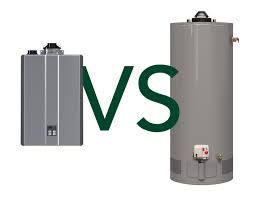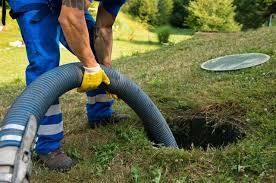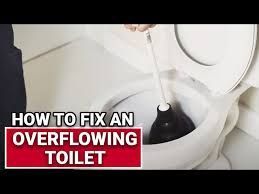Reasons to Keep Your Sinks Maintained
Sinks are often the silent workhorses of our homes. From washing dishes and prepping food to brushing teeth and cleaning up messy hands, they’re in constant use—but rarely do they get the attention they truly deserve. Until something goes wrong. A slow drain, a musty smell, or a sudden leak can turn your day upside down. That’s why regular sink maintenance isn’t just a luxury—it’s a necessity. In this guide, we’ll explore why maintaining your sink is crucial, what causes problems, and how to keep things flowing smoothly for years to come.
Sewer Line Repair: What to Expect from the Process
When Sinks Go Bad: The Root Causes of Trouble
Many homeowners don't realize just how easy it is for sinks to fall into disrepair. A sink doesn’t usually break down overnight—it sends signals first. Gurgling sounds, slow draining water, or a faint bad odor are just the beginning.
One of the most common causes is buildup. Over time, food particles, grease, soap scum, and hair can accumulate inside the drain. This narrows the pipe's passageway, making it harder for water to flow freely. If ignored, this can lead to full-on clogs that might require professional intervention.
Then there’s the issue of worn-out seals or fittings. Faucets and drains are connected by rubber washers and metal fasteners that age with time. Leaks can form, and water can start seeping into areas it shouldn’t, causing structural damage under your sink or even to your cabinetry.
Let’s not forget about mineral deposits. If you live in a hard water area, your sink’s faucets and drain can slowly calcify, making it harder for parts to function and reducing water pressure.
All of these issues might start small, but they can quickly snowball into major headaches.
How to Unblock a Sink in 5 Ways with Household Items
The True Cost of Neglecting Your Sink
What seems like a minor inconvenience can end up costing you much more than expected. A dripping faucet might waste gallons of water a day, increasing your utility bill unnecessarily. Over time, a small leak beneath the sink can ruin wooden cabinets, floors, or even invite mold growth—something that’s not only costly to repair but potentially hazardous to your health.
Ignoring your sink’s signals can also lead to plumbing emergencies. Imagine coming home after work to find your kitchen flooded due to a burst pipe under the sink. These situations usually demand urgent, expensive repairs and could have been prevented with simple maintenance steps.
So, yes—neglect is expensive. But the good news? Prevention is easy.
Step-by-Step: How to Maintain Your Sink the Right Way
Maintaining your sink doesn’t have to be complicated. Here’s a simple routine that will help you avoid the most common issues and keep your sinks in top condition.
Step 1: Regular Cleaning Goes a Long Way
Don’t wait until your sink looks grimy to clean it. Wipe down the basin daily to prevent soap scum and grime buildup. Once a week, clean the faucet handles and spout to remove fingerprints, water spots, and bacteria.
Use a non-abrasive cleaner and soft sponge to avoid scratching your sink, especially if it’s stainless steel or porcelain. For tougher stains or mineral deposits, try a mix of vinegar and baking soda—it’s gentle yet effective.
Step 2: Flush Your Drains Weekly
To keep things flowing smoothly, pour hot (not boiling) water down your sink drain once a week. This helps melt away any grease or soap that may be clinging to the pipes. You can also follow this with a mixture of baking soda and vinegar to freshen the drain and break down minor clogs naturally.
Avoid relying too heavily on chemical drain cleaners. While they might offer temporary relief, frequent use can damage your pipes over time.
Step 3: Check for Leaks Often
Every couple of weeks, take a moment to check under your sink. Look for signs of moisture, water spots, or a musty smell—these can indicate a slow leak. Also, feel around the faucet base and handles to make sure no water is seeping out.
Catching a leak early can save you from major damage down the line.
Step 4: Be Mindful of What Goes Down the Drain
Your sink drain is not a garbage chute. Avoid pouring grease, coffee grounds, or stringy vegetables down the kitchen sink—even if you have a garbage disposal. In the bathroom, install a hair catcher to prevent hair from causing clogs.
Teach everyone in the household what not to put in the sink, and you’ll be surprised how much longer it stays problem-free.
Risks Involved in Poor Sink Maintenance
It’s not just about inconvenience—poor sink maintenance can have serious consequences. Water damage, for example, can weaken the structural integrity of your home. Mold from hidden leaks can trigger allergies, asthma, and other respiratory problems.
Clogged drains can back up, causing contaminated water to spill into your sink—posing both a hygiene issue and an expensive cleanup problem.
Even pests are a risk. Small insects and rodents are drawn to moisture, especially in dark, hidden spaces like the cabinet under your kitchen or bathroom sink. Keeping this area dry and clean is essential in keeping critters away.
Expert Recommendations You Can Trust
Plumbers often say the best maintenance is prevention. According to industry professionals, annual inspections of your plumbing system—including your sink—can catch issues before they escalate. If you’re not confident in your DIY skills, hire a licensed plumber to give your system a once-over. It’s a small investment with a big payoff.
Many experts also recommend replacing sink parts like rubber washers or gaskets every few years. These parts are inexpensive but critical in preventing leaks.
And don’t underestimate the power of good habits. Keeping a small trash can near the sink can reduce the temptation to toss food scraps down the drain. Installing a water softener in hard water areas can minimize mineral buildup and extend the life of your fixtures.
Let’s look at a real-world scenario. A homeowner in a suburban neighborhood ignored a small drip under their bathroom sink. Over time, the leak soaked into the wooden vanity. By the time the damage was visible, mold had started forming, and the entire vanity needed to be replaced. What could have been a $10 washer replacement turned into a $700 repair job.
In contrast, another homeowner set a monthly reminder to inspect their sink area. One day, they noticed a tiny puddle under the pipe. A quick tighten with a wrench and some plumber’s tape fixed the issue in under ten minutes. That’s the power of proactive maintenance.
Preventive Measures You Can Put into Practice Today
If you want to keep your sinks in prime condition, start now. Develop a weekly cleaning habit. Pay attention to strange smells or sounds. Don’t ignore the early signs your sink gives you. Place strainers in your drains. Learn the basics of tightening a loose faucet or replacing a washer.
Most importantly, treat your sink like the hardworking fixture it is. It may not ask for much, but it certainly deserves your care.
Conclusion: A Little Love for Your Sink Goes a Long Way
Sinks may seem simple, but their role in your home is massive. With constant use comes inevitable wear, but with just a little attention and care, you can keep your sinks functioning beautifully and avoid the frustration of expensive, messy breakdowns.
By understanding what causes sink issues, taking preventative steps, and staying ahead of potential problems, you’ll save time, money, and a lot of unnecessary stress. Think of sink maintenance as a small commitment that pays off big in peace of mind.
Because when your sink works seamlessly—you hardly notice it. And that’s exactly the way it should be.




CONTACT INFORMATION
Office:
855-266-7682
Email:
service@AllCityPlumbers.com
Address: 6694 Oak Ridge Commerce Way, Austell, GA 30168
Business Hours:
Mon - Sun 24 Hours
OUR SERVICES
© 2022 All Rights Reserved|All City Plumbers Privacy Policy | Terms & Conditions | Sitemap

